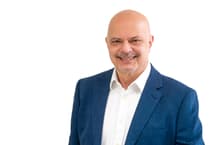BIG jets and aviation engineers have returned to Lasham airfield to secure the future of the former ATC site.
After the axe fell on ATC Lasham last October, resulting in hundreds of redundancies, it was good news for the local economy as a new company flew in to take over the site.
According to Lasham Gliding Society, which owns the airfield, 2Excel Engineering Ltd signed an agreement on Christmas Eve to become tenants of the industrial complex west of the site.
It was a welcome Christmas present for the gliding society, with interim general manager Zenon Marczynski confirming in a statement that “big jets will be continuing to use the airfield, some of which may look familiar!”.
A great deal of work has gone on since then with final confirmation late last Wednesday that 2Excel Engineering Ltd had completed its purchase of the ATC Lasham business and assets from the administrator, Grant Thornton.
According to 2Excel aviation director Andy Offer, 43 retained members of staff returned to work on Monday, January 4, following the Christmas break.
The company 2Excel Engineering Ltd is a new maintenance repair organisation that has been created using the long-standing engineering experience of the retained staff at the ATC Lasham site, under a new management team led by the two majority shareholders – 2Excel Aviation Ltd and TAG Aviation Stansted Ltd. Both are established aerospace businesses.
Founded in 2005 by two former RAF pilots, Chris Norton and Andy Offer, 2Excel claims to deliver “bespoke aviation solutions for doing difficult things well”.
It has evolved and grown over the years and now has five primary business streams – The Blades formation aerobatic display team – the world’s only aerobatic airline; Scimitar, a developmental test and evaluation unit with unique flying laboratories; Sabre, providing high-end contract-air services for hire; BroadSword, taking discerning clients where they want to go, when they want to go; and Leading Edge, getting ideas airborne.
Key to its acquiring the Lasham site is ATO, which uses two Boeing 727s to operate the company’s oil-spill response operation.
ATC Lasham was the only UK company able to offer a maintenance service for this model of aircraft.
TAG Aviation (Stansted) was formed 25 years ago by Trevor Gunn and is a supplier of spares, aircraft and engines and services to large aircraft operators, primarily Boeing operators.
Mr Gunn sees the rejuvenation of the Lasham site as “going hand in hand” with his company’s future requirements.
It should be noted that in this case, TAG stands for Trevor Gunn’s initials. The company should not be confused with and is not in any way associated with TAG Aviation Farnborough.
In welcoming the new investment in Lasham airfield, Hampshire County Council’s economic development team confirmed that since ATC Lasham went into administration in October it had worked hard to support administrators Grant Thornton in identifying potential users of the site, and will continue to offer support to the new operators to help ensure Lasham airfield’s continuing success.
Sean Woodward, the county council’s executive member for economy, transport and environment, said: “Aerospace and the associated maintenance, repair and overhaul services are important industries for Hampshire, representing solid opportunities for employment and economic growth. Making sure this strategically important part of the airfield capacity is brought back into use while retaining the skills and talent of the workforce there is good news indeed for the local community and Hampshire as a whole.”
Andrew Joy, the county’s executive member for communities, partnerships and external affairs, added: “I’m really pleased to see this new investment in Lasham Airfield by a dynamic new company, and that our combined efforts with East Hampshire District Council to make the industry aware of the aerospace engineering skills and experience available has had such a positive result.
“The site is now in operation and a significant proportion of the former workforce is employed with plans for further early growth.”





Comments
This article has no comments yet. Be the first to leave a comment.